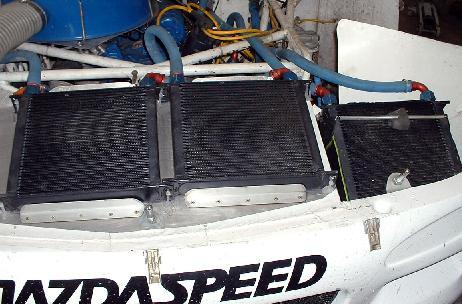|
|
In a message dated 11/29/2004 7:31:56 AM Central Standard Time, Joseph.M.Berki@grc.nasa.gov writes:
<< Rusty,
Did you measure the delta P by measuring the pressure in the front and back of the evap cores? Before chopping up fiberglass it would be interesting to measure the pressures in the oil evap core and compare it to the pressures of the water evap cores. Just a thought.
Joe Berki
Limo EZ
>>
The oil pressure relief is open a crack once the pressure gets to it's setting, say 85 PSI. Routing this dumped oil through a small cooler and then back to the pan might be enough extra cooling to cover what you need. The energy to pressurize that oil is already spent, so no power would be lost to additional pumping.
Oil temp is mostly a reading of how hot the rotors are running. So an increase in power shows up quickly on the temp gage. If there is close to adequate cooling the temps should come back down quickly when power is reduced.
In our case just dropping the shift RPM from 9,300 to 9,000 would bring the temps back in line. I added a third cooler, and no more cooling problems have been seen.
The Dodge/Chrysler/Plymouth minivan condenser is long and flat and available in any junk yard. Before we had any money at all I used the GM Harrison cores for oil coolers. Worked fine for me.
Lynn E. Hanover

Oil Radsa.jpg
|
|